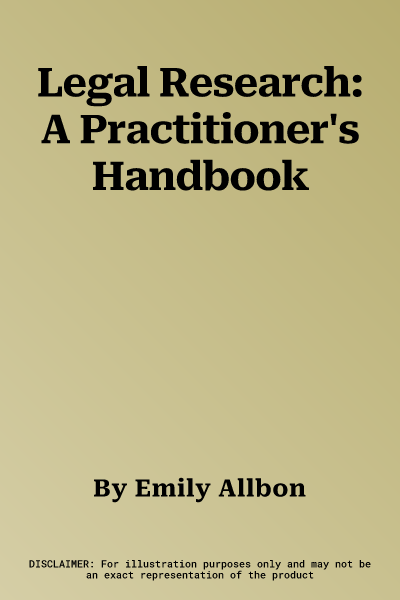Legal Research: A Practitioner's Handbook provides practical advice on
every aspect of effective legal research: problem analysis, selecting
and finding the best sources; and presenting results effectively. This
third edition has been thoroughly updated, taking into account the
increasing popularity of commercial databases aimed at UK law
practitioners; the overhaul of a number of government and other official
sites (national and international); and significant changes to
directions by UK courts relating to the conduct and presentation of
legal research. New material on the use of social media in legal
research, business information and making use of a law firm's internal
precedents has also been added. Part A covers problem identification and
analysis, followed by advice on how to select the best sources and
formats (paper or electronic) for research. Part B deals with the
information most frequently sought by practitioners, listing sources
with analytical comments and, for a selection of the most complex, 'how
to use' instructions developed to a standard template. Jurisdictional
coverage includes England, Wales, Scotland, Northern Ireland and the
European Union, with the addition of information on key sources in
European human rights and international law. Part C details sources on
how to make the presentation of the results of legal research more
effective. These three parts are supplemented by Part D, which describes
in non-technical language how a practitioner might get the best value
for money when buying information, whether print or online, from
commercial law publishers. Extensive appendices provide indexes to
abbreviations for Acts, journals and law reports; a glossary of
technical terms used in legal research; a summary of the practice
directions, statements and decisions of the UK courts relating to legal
research; a table of guidance on how to devise more effective searches
on the four most popular commercial databases; and a popular names index
for legislation and cases relating to the UK and the EU

